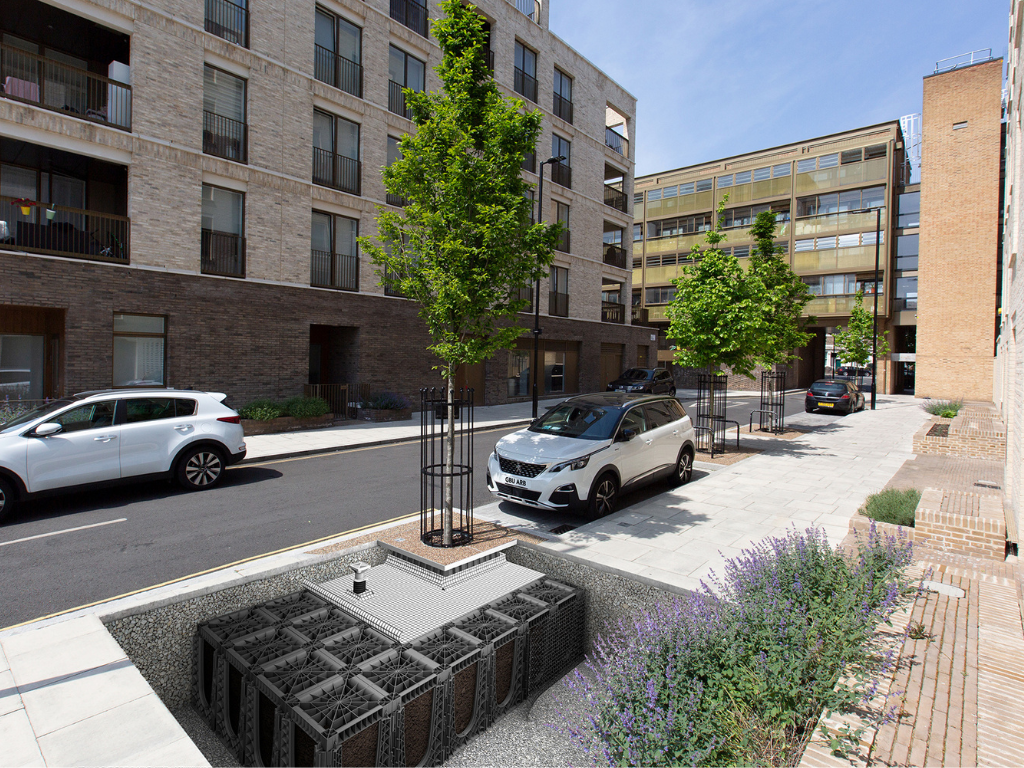Imagine for a moment an endless city sidewalk in a neighborhood of stunning historic buildings. The clean lines of the buildings’ designs seem to align perfectly with the coolness of the concrete environment. But the picturesque scene is lacking something…a certain warmth and life that encompass that feeling of “home.” The beauty of this nostalgic urban scene is immediately transformed simply by adding a canopy of life-giving foliage.
But improving the picture of our city streets by planting trees is just the beginning. Redeveloping high-traffic urban streets is not only beautifying cities across America, but also regenerating the air the residents breathe and improving the quality and enjoyment of their lives. This is all happening by the simple addition of trees.
The advantages of bringing trees to a cityscape are considerable. The immediate benefits residents notice are the insulation tree canopies afford from summer heat and winter cold; in addition, trees buffer the noise of city traffic. As those trees develop, they create oxygen and mitigate carbon, literally improving the quality of health and life of those residents.
Need some proof that our environment changes when we plant trees? Here are some of the facts:
- A single mature tree absorbs carbon at a rate of 47.5 lbs per year.
- Tree planting remains one the most cost-effective methods to control CO2.
- Trees buffer stormwater and prevent erosion (100 mature trees can capture over 300,000 gallons of rainwater each year).
- Mature trees and greenspaces help reduce crime levels in urban areas.
- Trees have been shown to have a positive effect on road safety. Roadside planting can also be used to improve pedestrian safety by creating a barrier between roads and sidewalks.
Despite all the advantages of growing trees in an urban setting, there are no doubt some unique challenges. First and foremost, trees need SOIL and SPACE to develop a root system. In an environment that is almost entirely concrete, every cubic foot of space is critical to creating enough soil volume to grow healthy trees. One way GreenBlue Urban has addressed this root management challenge is through the development of RootSpace soil cells and the deployment of our root barriers, all of which are manufactured using recycled materials. These ensure that tree roots have the absolute maximum space to grow, further enabling the ability for urban trees to thrive and survive.

Communities have been attempting to add a prominent touch of green to their cityscapes for years, and many have done so short-term. But an ongoing problem has been that these trees don’t have longevity because of the lack of soil quality and volume. Planting the trees has proven not nearly the problem that long-term survival of the trees has been. For this reason, GreenBlue Urban created an ArborSystem that ensured that cities would not be wasting money and valuable resources by constantly replacing the life that once existed. The tree pit system replicates the forest floor and provides trees with uncompacted aerated soil. The result is vibrant and long-lasting growth. And the effect on our nation’s city streets is literally life-giving.
GreenBlue Urban has no desire to eliminate the portrait of our urban communities but to preserve it. The architecture and design of our nation’s cities reflect our history and achievements, and GreenBlue strives to enhance the picture of America’s city streets, preserving the heritage of their buildings and improving quality of life for their residents.

